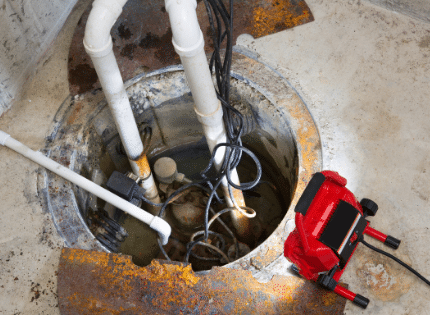At Regional Foundation Repair, we offer comprehensive sump pump services for both repairs and installations. Our experienced technicians are equipped with the knowledge and tools necessary to handle a wide range of sump pump issues. Whether your sump pump is malfunctioning, making unusual noises, or simply needs routine maintenance, our team is ready to provide prompt and efficient solutions.
In addition, we offer professional sump pump installations tailored to your specific needs. Don’t let water damage ruin your home. Our goal is to ensure your sump pump system is in optimal working condition, providing you with peace of mind and a dry, protected basement or crawlspace.
Our Sump Pump Services Process:
- Assessment: Our team will conduct a thorough assessment of your basement or crawlspace to determine the specific sump pump requirements for your property. We take into account factors such as the size of the area, water intrusion patterns, and any existing sump pump system.
- Recommendations: Based on the assessment, we will provide you with detailed recommendations for sump pump repairs or installations. We will explain the various options available, ensuring you have a clear understanding of the benefits and costs associated with each solution.
- Repairs or Installations: Once you approve the recommended course of action, our skilled technicians will proceed with the necessary repairs or installations. We use high-quality sump pump systems and adhere to industry best practices to ensure reliable and long-lasting performance.
- Testing and Calibration: After the repairs or installations are complete, we thoroughly test and calibrate the sump pump system to ensure it is functioning optimally. This includes checking for proper drainage, evaluating the pump’s activation and deactivation mechanisms, and confirming the pump’s ability to handle the expected water volume.
- Ongoing Maintenance: We emphasize the importance of regular maintenance to keep your sump pump system in top condition. Our team can schedule routine inspections, cleaning, and maintenance to extend the lifespan of your sump pump and mitigate potential issues.
What is a Sump Pump?
A sump pump is a key part of waterproofing systems designed to prevent water damage and flooding in basements or crawlspaces. It’s typically installed in a sump pit or basin, which collects and directs water away from the foundation of a building. When excess water enters the pit, the sump pump activates and pumps the water out and away from the property, helping to keep the area dry and protected. Sump pumps are available in different types, including submersible pumps that operate underwater and pedestal pumps that sit above the sump pit. These pumps are equipped with sensors or floats that automatically activate the pump when water reaches a certain level.
WHO WE ARE
At Regional Foundation Repair, we are a trusted provider of sump pump services, offering reliable and professional solutions for homeowners. With over two decades of experience in the industry, we have built a reputation for excellence and a commitment to customer satisfaction.
Our skilled technicians possess extensive knowledge of sump pump systems and are equipped with the expertise to handle repairs and installations efficiently. We understand the importance of a dry and protected basement or crawlspace, and we strive to ensure that your sump pump operates effectively to prevent water damage and flooding.
With our reliable services, top-quality products, and dedication to delivering exceptional results, you can trust us to keep your property safe and dry.

